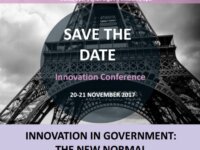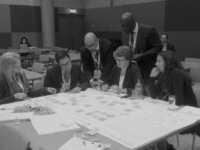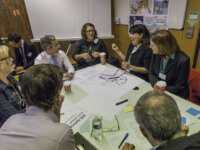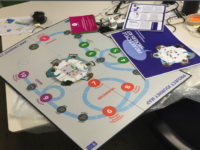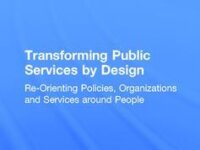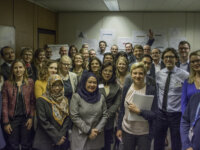The OECD’s OPSI and our partners at the European Commission are excited to convene innovators from around the world for a conference on “Innovation in Government: The New Normal” on 20-21 November 2017 a the OECD Conference Centre in Paris, France. We’re lining up a lot of fantastic speakers – would you like to be one? Interested in sharing the event with your friends? Feel free to share this page or download the flyer. Innovation...
Author: OPSI
This blog was authored by former OPSI Policy Analyst, Matt Kerlogue In my previous blog post, I set out the OPSI’s beta model of skills for public sector innovation, structured around six skill areas: iteration, data literacy, user centricity, curiosity, storytelling and insurgency. But providing an outline and description of these six areas is hardly sufficient to enable the uptake of these skills. Our work to develop the skills model, alongside the Observatory’s wider work...
The case for innovation in the public sector is well known, but despite being on the agenda of governments for much of the past decade it often remains limited to small teams, scattered activities and/or high profile projects. Often these teams and projects involve external innovators and specialists being brought in to government to work on key projects. While governments will still need the expertise of external specialists – to ensure they maintain access to...
This blog was authored by guest blogger, Benjamin Kumpf Policy Specialist, Innovation, United Nations Development Programme “We are trying to prove ourselves wrong as quickly as possible, because only in that way can we make progress.” Richard Feynman, Noble Prize winning physicist, emphasized this paradigm as guiding principle for work in natural sciences. Based on what we have learned over the last three years in the Innovation Facility in the United Nations Development Programme…
This blog is authored by guest blogger, Sabine Junginger Head, Competence Center for Design and Management at University of Applied Sciences and Arts Lucerne Public sector challenges inherently concern and involve people. “The Public” after all does not exist in the absence of people. Nor does government. Those we entrust with the responsibilities to govern are people. We ask policy-makers and public managers to develop and implement policies that lead to socially desirable outcomes. In…
This blog was authored by former OPSI Policy Analyst, Matt Kerlogue Bonne année. Gott nytt år. Frohes neues Jahr. 明けましておめでとうございます. Feliz año nuevo. Szczęśliwego nowego roku. Happy New Year! The OPSI team hopes that you have had a great start to 2017. In 2016 our team grew from two to six people. We launched off a number of projects under our European Horizon 2020 grant. And we ran a global call for innovation projects to...
Back in November 2014, at the launch of the Observatory of Public Sector Innovation, more than 400 policy makers, front line public servants, civil society organisations, and academics gathered at the OECD to celebrate government innovation—how we can do things differently to achieve positive results for individuals and society. At that event, the OECD made a call to action for governments to create the conditions to promote and enable public sector innovation. How did countries...
This blog was authored by guest blogger, Bruno Queiroz Cunha, Advisor, Special Advisory Unit for Management Modernization, Brazilian Ministry of Planning Innovation requires a certain amount of creativity and dynamic thinking, two qualities that come somewhat naturally in Brazil. The country’s recent Innovation Week was all about harnessing these attributes for positive change in the public sector. From November 30th and December 4th, several hundred participants embarked enthusiastically…
If you are trying to raise awareness of innovation – both the need for it, and ways of doing it – and trying to help public servants learn about the process of innovation, how might you proceed? In Australia, we established ‘Innovation Month’ – a month long series of events and activities about innovation targeted at public servants and interested stakeholders and partners. In 2015, Innovation Month had the theme of ‘Dream, Dare, Do’ and...
Today, the number of NEET (not in education, employment or training) youth in Surrey has more than halved from about 1000 to 429 from five years ago, with data showing that Surrey had achieved the lowest joint NEET proportion in England between November 2013 and January 2014. How this result has been achieved? By putting youth needs first we changed the logic of service delivery focusing away from packaging interventions to commissioning better outcomes for Surrey youth.

